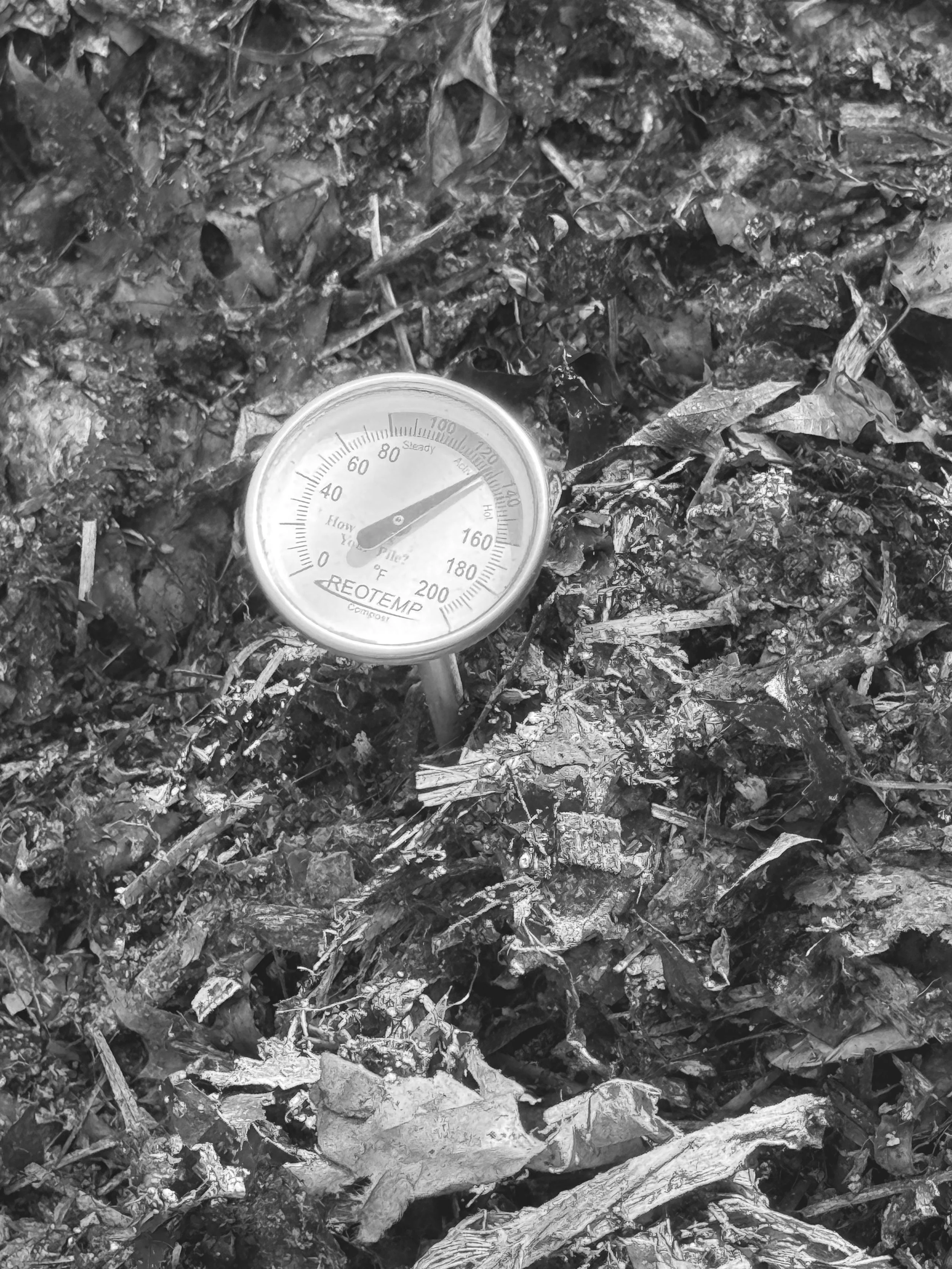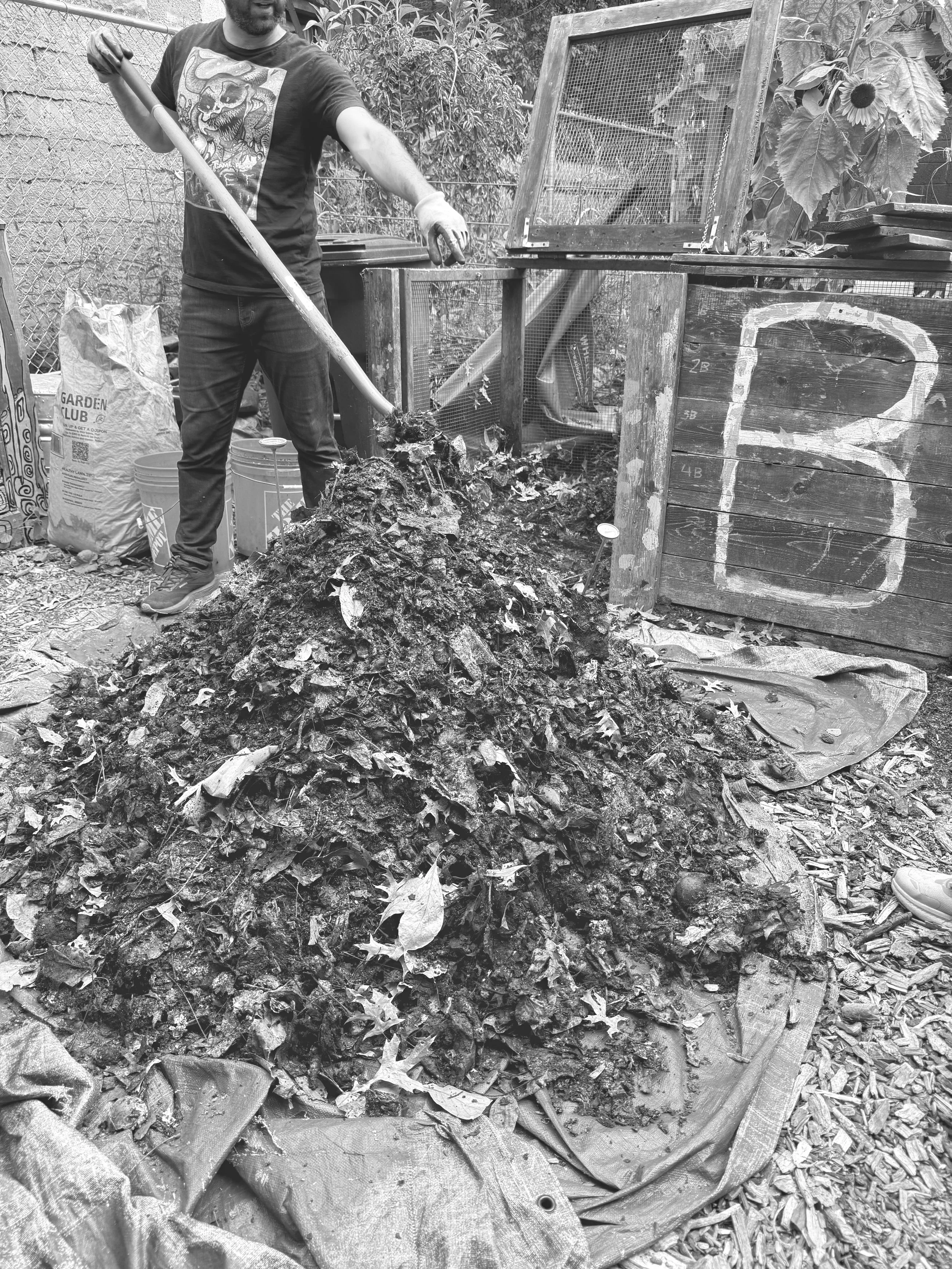Steamy Compost, Soil Science, and Community Magic at Maple Street Community Garden
📷by Jess Frost
It’s hot, y’all.
Secret: this author does not take the heat well. My name is Jess Frost, I suppose, but I digress. Let’s talk about temperature this week.
Steaming hot piles of curing compost, if you will.
A few Wednesdays ago, I led a quiet shift turning two bins with another volunteer. My favorite part of composting is the community. On a warm July afternoon, I got to know a neighbor I never would have met otherwise. We connected over our similarities—we’re both parents, we love this neighborhood, and yes, we both have impeccable taste in music (objectively speaking).
Lately, every day feels like a tug-of-war between too much screentime, ducking AI, and still trying to stay in the loop. Out there with the bins, though, I get to wrap my fingers around the pitchfork, dig my heels into the earth, and actually be present. It’s not just about food scraps breaking down—it’s about the conversations that bubble up, the ideas we toss around, the tiny community we build between heaves of the shovel.
That’s the thing about compost: the bins have a magical way of bringing us together and checking our egos at the garden gate. We glove up, dig in, and share both the workload and the weird joy of moving half-decomposed food scraps around. Maple Street Community Garden (MSCG) is, in my completely unbiased opinion, the most inspirational place on earth. (Maybe the galaxy? Feel free to chime in the comments.)
📷by Jess Frost
As we worked pitchfork by pitchfork, shovel by shovel, to unload Bin B, a steaming pile formed on the tarp. A free (albeit very disgusting) facial. I couldn’t help but wonder what stage Bins B & C were in. B was hot, heavy, and puffing out steam like a dragon. C was half the volume, drier, and noticeably lighter.
Here’s the science-y bit: the bins at MSCG use thermophilic composting. As the name implies, this process heats up enough to kill off pathogens and weed seeds. That heat is produced by microbial activity, and the whole thing has three main stages:
1st Mesophilic Stage: 68–104°F, lasting a few days to a few weeks
Thermophilic Stage (active): 105–150°F, lasting 3 weeks to several months
2nd Mesophilic Stage (curing): below 104°F, lasting 1 to several months
The following Saturday, we checked the thermometer: Bin B was a balmy 124°F, confirming my sweaty suspicions that it was in the Thermophilic Stage. Bin C, on the other hand, was likely in the 2nd Mesophilic Stage—curing and almost ready to grace our garden beds.
📷by Jess Frost
So yes, temperature matters. A lot. And we manage it with moisture control. Decomposers need water just as much as we do. Too dry? Add water. Too wet (hello ammonia smell)? Add browns and air it out.
Which brings us to aeration.
While passive airflow happens naturally, at MSCG we actively aerate by turning. Sometimes that’s with the corkscrew aerator (auger) directly in the bin, sometimes it’s the full monty: shovels, pitchforks, tarp, and back again. This keeps oxygen flowing, prevents soggy anaerobic messes, and keeps our microbes happy. (Pro tip: anaerobic conditions = stinky leachate + creepy white actinobacteria webbing.)
If you’ve volunteered before, chances are you’ve turned a bin or two. It’s sweaty, it’s a workout, and yes—it’s oddly satisfying. But most importantly, working together like this really connects us to the land and our community.
Want to join us? Volunteer shifts are open—sign up through this form and come turn some bins with us.
👉Join the Compost Committee Here
That’s the soil for now. This author is off to sip some ice-cold water infused with cucumber, mint, and lemon balm (straight from the garden, of course).
With grit & gratitude,
Jess Frost
MSCG Compost Committee



